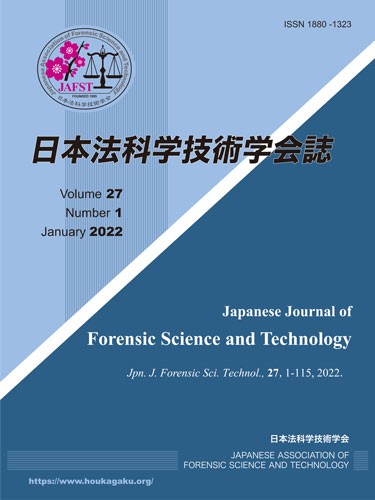Volume 27, Issue 1
Displaying 1-10 of 10 articles from this issue
- |<
- <
- 1
- >
- >|
Original Article
-
2022Volume 27Issue 1 Pages 1-13
Published: 2022
Released on J-STAGE: January 31, 2022
Advance online publication: July 16, 2021Download PDF (4488K) -
2022Volume 27Issue 1 Pages 15-26
Published: 2022
Released on J-STAGE: January 31, 2022
Advance online publication: July 28, 2021Download PDF (483K) -
2022Volume 27Issue 1 Pages 27-38
Published: 2022
Released on J-STAGE: January 31, 2022
Advance online publication: September 18, 2021Download PDF (534K)
Technical Note
-
2022Volume 27Issue 1 Pages 39-47
Published: 2022
Released on J-STAGE: January 31, 2022
Advance online publication: August 09, 2021Download PDF (440K) -
2022Volume 27Issue 1 Pages 49-62
Published: 2022
Released on J-STAGE: January 31, 2022
Advance online publication: August 05, 2021Download PDF (2088K) -
2022Volume 27Issue 1 Pages 63-72
Published: 2022
Released on J-STAGE: January 31, 2022
Advance online publication: October 14, 2021Download PDF (1165K) -
2022Volume 27Issue 1 Pages 73-83
Published: 2022
Released on J-STAGE: January 31, 2022
Advance online publication: November 16, 2021Download PDF (1828K) -
2022Volume 27Issue 1 Pages 85-92
Published: 2022
Released on J-STAGE: January 31, 2022
Advance online publication: November 16, 2021Download PDF (892K) -
2022Volume 27Issue 1 Pages 93-105
Published: 2022
Released on J-STAGE: January 31, 2022
Advance online publication: December 14, 2021Download PDF (1720K)
Note
-
2022Volume 27Issue 1 Pages 107-115
Published: 2022
Released on J-STAGE: January 31, 2022
Advance online publication: July 31, 2021Download PDF (637K)
- |<
- <
- 1
- >
- >|
